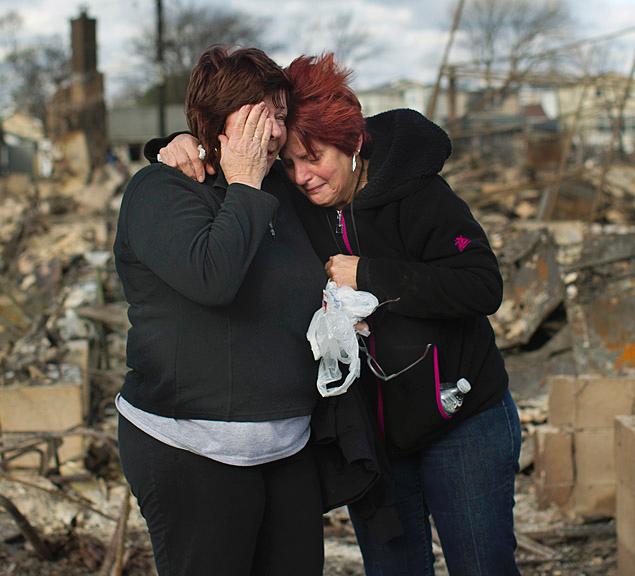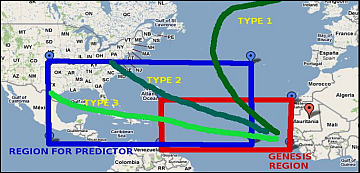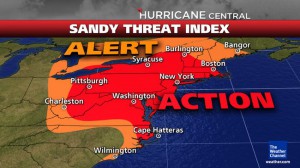This last week has seen millions of peoples lives devastated by Super-Storm Sandy. Sandy was formed in the Caribbean and it took nine days until Sandy finally began to dissipate over Pennsylvania:
- 1.
October 22nd
- A depression forms off the coast of Nicaragua in the South Caribbean Sea.
- 2.
October 24th
- Sandy becomes a category 1 hurricane, and passes the Dominican Republic and Haiti. 50 people die in Haiti in mudslides caused by heavy rain.
- 3.
October 26th
- Sandy strikes Cuba as a category 2 hurricane (only 1 mph away from being a category 3). Cuba is left devastated.
- 4.
October 27th
- As Sandy approaches Florida the hurricane deflects off Florida into the Atlantic, and weakens to a tropical depression.
- 5.
October 28th
- As Sandy travels up parallel to the east coast the storm begins to strengthen. Sandy becomes a category 1 hurricane again, and starts to turn towards Baltimore, Washington. Philadelphia, and New York.
- 6.
October 29th
- Sandy makes a sharp turn towards New Jersey. Sandy hits shore around 8pm, near Atlantic City. The full moon adds to the storm surge. The coast of New Jersey, and New York is devastated by the 14 foot surge.
- 7.
October 30th
- The storm moves away from New York towards Pennsylvania and begins to weaken.
Super-Storm Sandy left 109 people dead in America, with 40 of the deaths in New York alone. Millions were left without power, gas, or food for days. It is estimated the damage caused by the storm will cost $50 billion.


